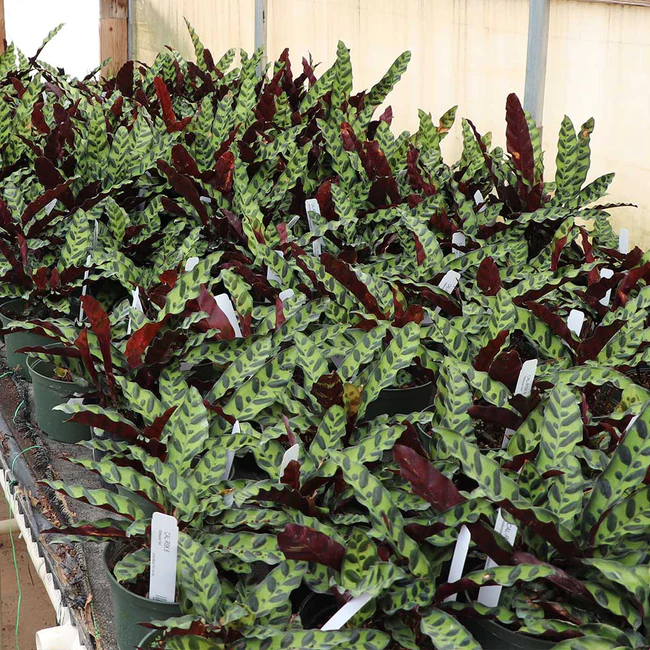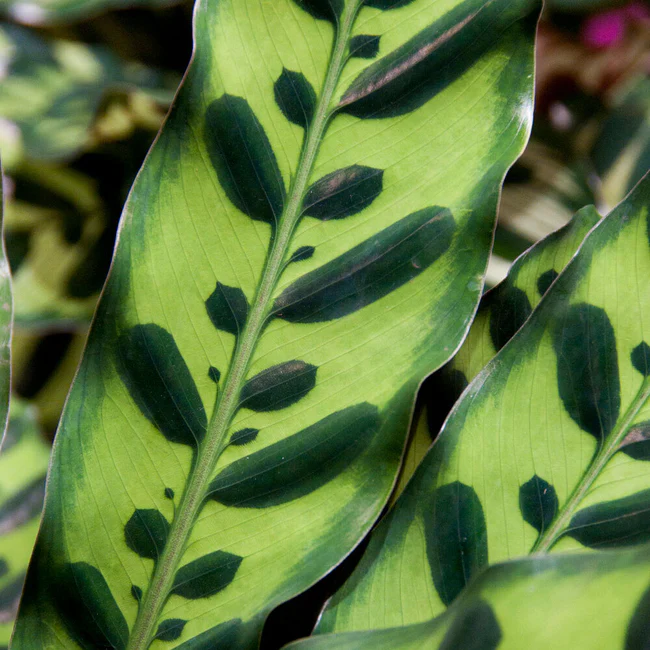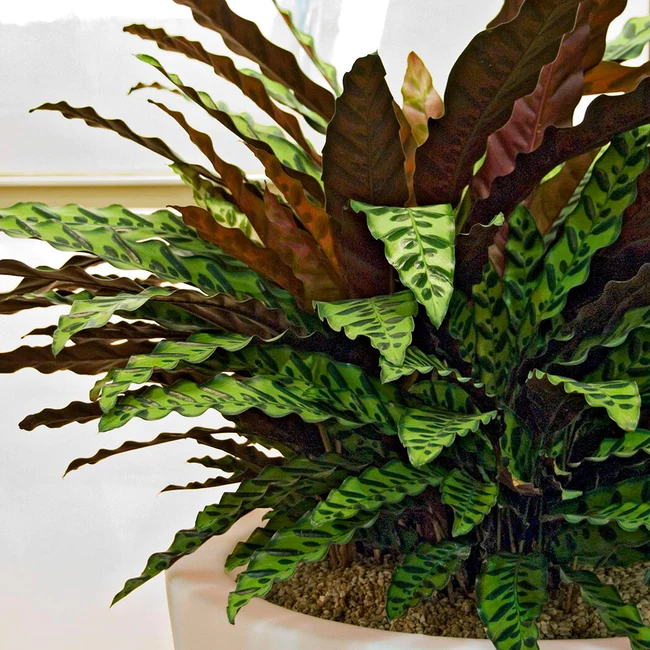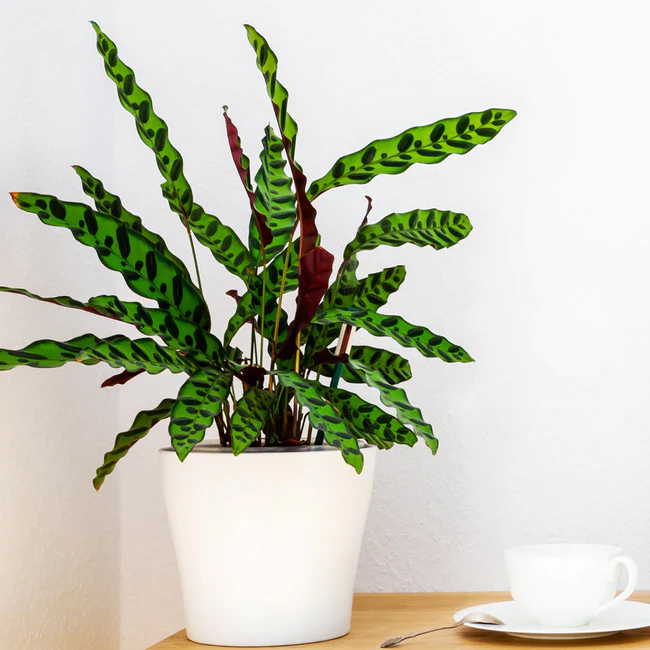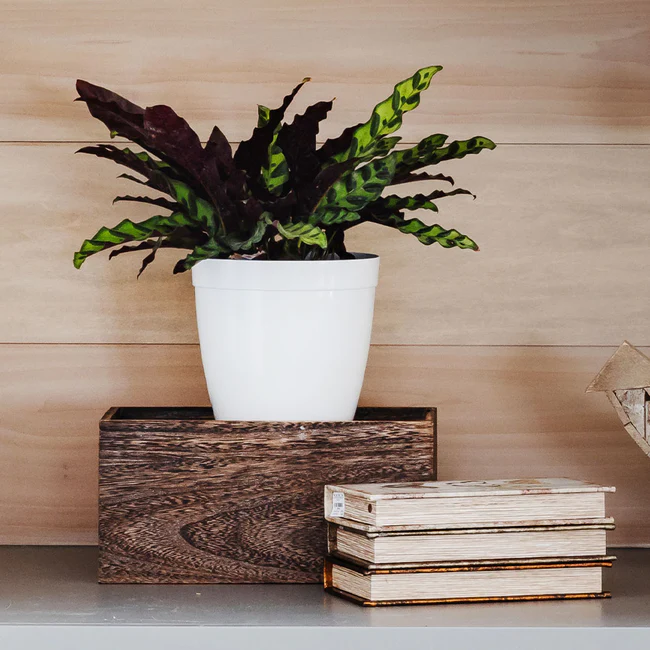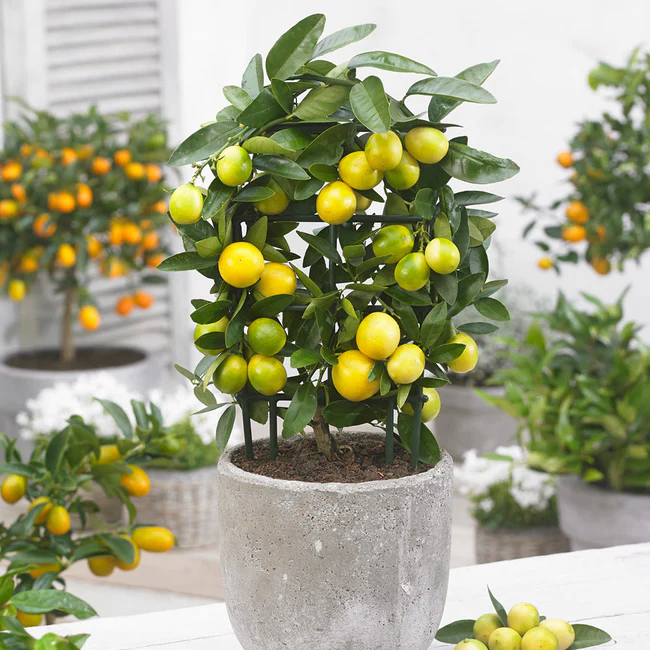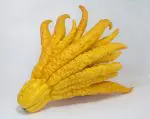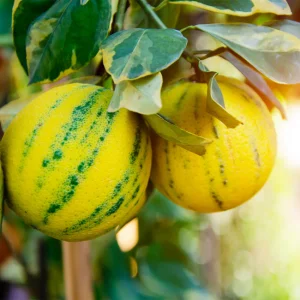This post contains affiliate links. If you buy something from one of our links we may earn a commission. Thanks
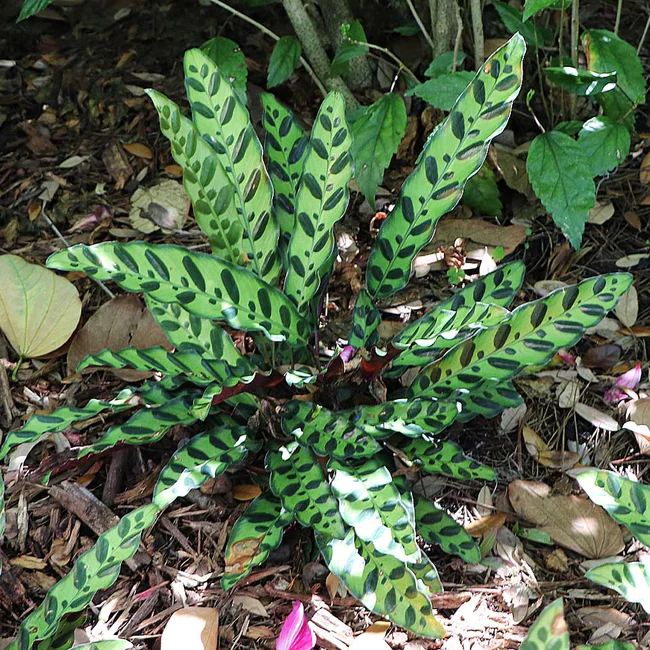 Bringing a touch of the tropics into your home with Calathea plants can be a truly rewarding experience.
Bringing a touch of the tropics into your home with Calathea plants can be a truly rewarding experience.
Calathea care indoors involves placing the plant in indirect sunlight, maintaining a consistent watering schedule to keep the soil moist but not waterlogged, and ensuring a humid environment, ideally above 50% humidity. It’s also advisable to use a well-draining potting mix, and feed with a balanced fertilizer during the growing season.
However, ensuring the proper care and maintenance of these beautiful plants can be a challenge, especially if you’re new to indoor gardening.
In this post, we’ll explore the key elements of Calathea Care Indoors and provide you with helpful tips and tricks to keep your Calathea indoor plants thriving.
Calathea Care Indoors is a crucial aspect of maintaining the beauty and lush green appearance of these stunning tropical plants.
Often referred to as the peacock plant for its gorgeous, intricately patterned leaves, Calathea is a must-have for plant enthusiasts and anyone looking to add a touch of nature to their home decor.
What Is A Calthea Plant?
Calathea is a genus of tropical plants native to South and Central America. They are known for their striking, colorful leaves that come in a variety of patterns and hues, making them popular as ornamental plants.
They are often called prayer-plants. Calathea plants have several common names including cathedral plant, peacock plant, zebra plant, and rattlesnake plant.
Calthea Genus And Calthea Varieties
Calathea is a genus of plants in the Marantaceae family, native to tropical areas of Central and South America.
There are over 300 species in the Calathea genus, with many of them being prized for their stunning, patterned foliage.
Just going by a plant’s common name can be confusing so try to choose new plants labeled by their scientific Latin name even if you can’t pronounce it.
The leaves of Calathea plants are often oval or elliptical in shape and come in a range of colors, including green, yellow, and purple, with some species having a metallic sheen.
Some of the most popular Calathea species include the Calathea zebrina (Zebra Plant), Calathea ornata (Pinstripe Plant), Calathea rufibarba (Furry Feather Plant), and Calathea makoyana (Peacock Plant). Calathea Orbifolia is one of the largest prayer plants growing 2-3 feet tall. Calathea lancifolia is called Rattlesnake Plant for its rattlesnake-like patterns.
Calathea plants are known for their stunning foliage displays and are often used as indoor houseplants, providing a touch of tropical beauty to any room.
In addition to their attractive leaves, Calathea plants are also known for their air-purifying abilities, making them a great choice for improving indoor air quality.
One of the most distinctive and fascinating features of Calathea plants is their habit of folding their leaves at night, a behavior known as “nyctinasty.”
This is a natural adaptation that helps the plant conserve moisture and protect its delicate leaves from nighttime dew or condensation.
During the day, when light is present, the leaves will unfurl and stretch towards the light, photosynthesizing and producing energy for the plant.
At night, when light levels drop, the leaves will begin to fold up, protecting themselves and conserving moisture.
This fascinating display of movement is one of the reasons Calathea plants are so popular among plant enthusiasts and indoor gardeners alike.
Proper Calathea Care Indoors Is Important
Calathea plants are relatively delicate and require specific conditions to thrive indoors.
Without proper care, they can become diseased, develop pest infestations, or simply wilt and die.
This post will cover the key elements of Calathea Care Indoors, including the ideal growing conditions, watering and humidity requirements, and proper fertilization and pest control.
The purpose of this post is to provide information and tips for Calathea Care Indoors and the best way to help plant owners successfully grow and maintain these stunning plants in their homes.
Whether you are a seasoned plant enthusiast or new to indoor gardening, this post will provide you with valuable information for keeping your Calathea plants healthy and beautiful.
Choosing the Right Pot and Soil
Properly choosing the right pot and soil can greatly impact the health and growth of your Calathea plant. In this section, we’ll discuss the factors to consider when selecting the right pot and soil for your Calathea.
Importance of good drainage:
Good drainage is crucial for Calathea plants, as they are sensitive to standing water and root rot.
Make sure the pot you choose has drainage holes at the bottom to allow excess water to escape.
Appropriate pot size for Calathea plants:
The size of the pot you choose should allow room for growth, but not be too large that the soil remains too wet.
A pot with a diameter of 6-8 inches is usually appropriate for a Calathea plant.
The best type of soil for Calathea plants:
Calathea plants prefer well-draining soil that is moist but not waterlogged. A commercial potting mix specifically formulated for tropical plants or a mixture of peat moss, perlite, and vermiculite works well for Calathea plants.
I prefer using coco coir over peat-based products as a more environmentally sustainable alternative.
A 50/50 mix of coco coir and polite provides a fast-draining medium with good water-holding capacity.
Avoid using heavy soils that retain water, as these can lead to root rot.
Light and Temperature Requirements
Light and temperature play a crucial role in the health of Calathea plants.
In order to keep your Calathea thriving, it’s important to understand their ideal light and temperature conditions, as well as how to avoid environmental stress.
Optimal light conditions for Calathea plants
Calathea plants prefer bright, indirect light and should not be exposed to direct sunlight.
Placing your Calathea near a south-facing window is ideal. In low-light situations, the leaves may begin to yellow, but too much sunlight can cause the leaves to scorch.
Temperature range for Calathea plants
Calathea plants prefer temperatures between 60-85°F. Cold drafts or sudden temperature changes can cause stress to the plant, which may result in leaf damage or loss.
How to avoid temperature stress on Calathea plants
To avoid temperature stress, it’s important to keep your Calathea plant away from cold drafts, direct heat sources, and any sudden temperature changes.
It’s also helpful to maintain a stable temperature range in the room where the plant is located. By taking these steps, you can ensure your Calathea stays healthy and thrives.
Watering and Humidity Requirements
Watering and humidity are two important aspects of Calathea care that are often overlooked.
In this section, we’ll focus on the optimal watering frequency and humidity level for Calathea plants and how to ensure they receive the right amount of water and moisture.
Optimal watering frequency for Calathea plants:
Calathea plants prefer evenly moist soil but do not tolerate standing water.
To avoid over or underwatering, check the soil regularly. The best time to water is when the top inch of soil feels dry to the touch.
Calthea plants may be sensitive to tap water. So consider using distilled water, or RO water, or adding a filter to your tap that removes chlorine, chloramines, and fluorides.
How often to water Calathea plants:
Calathea plants prefer evenly moist soil, but not soaking wet. A good rule of thumb is to water your Calathea plant when the top inch of soil feels dry to the touch.
Water thoroughly, allowing excess water to drain from the pot, and then allow the soil to partially dry before watering again.
Remember to empty the saucer after watering because you don’t want the pot sitting in standing water.
How to tell if a Calathea plant is under or over-watered:
Over-watered Calathea plants will have yellowing leaves and a mushy or rotten smell, while under-watered Calathea plants will have brown or crispy leaves and a dry soil surface.
Again to determine if your Calathea plant is receiving the right amount of water, stick your finger into the soil to feel for moisture.
Lift the pot. If it is heavy it does not need more water. Eventually, you can develop a feel for this by comparing dry and watered pots.
Ideal humidity level for Calathea plants:
Calathea plants thrive in high-humidity environments, ideally between 50-70%.
If during the winter months when the air in your home is dry, you can create a more humid environment around your Calathea plant by misting the leaves regularly, using a humidifier, or placing a pebble tray of water near the plant.
How to avoid humidity stress on Calathea plants:
Calathea plants are sensitive to low humidity, which can cause the leaves to dry out and become crispy with brown edges.
To avoid humidity stress, be sure to maintain humid conditions around your Calathea plant and avoid placing it near sources of dry air, such as fans or heating ducts, or air conditioning units.
Increasing humidity for Calathea plants:
Calathea plants prefer high-humidity environments and will benefit from additional moisture in dry indoor environments.
You can increase humidity around your Calathea plant simply by misting the leaves regularly, using a humidifier, or placing a pebble tray partially filled with water near the plant.
Additionally, grouping multiple plants together can also increase the humidity in the surrounding area.
Proper Fertilization
Providing your Calathea plant with the proper nutrients is key to its growth and overall health.
In this section, we’ll discuss the best practices for fertilizing your Calathea plant and ensuring it receives the right amount of nutrients.
How often to fertilize Calathea plants:
Calathea plants should be fertilized every 2-4 weeks during the growing season (spring to fall) and every 4-6 weeks during the dormant season (winter). A balanced, water-soluble fertilizer is recommended for Calathea plants.
The best type of fertilizer for Calathea plants:
Look for a balanced, water-soluble fertilizer with equal amounts of nitrogen, phosphorus, and potassium.
These nutrients are essential for Calathea plant growth and should be applied in the right balance.
How much fertilizer to use for Calathea plants:
The amount of fertilizer to use will depend on the type of fertilizer and the size of the Calathea plant.
Always follow the manufacturer’s instructions and be sure not to over-fertilize, as this can harm the plant.
A good rule of thumb is to apply fertilizer at half the recommended strength. This will provide your Calathea plant with the right amount of nutrients without overloading it.
 You can also use fertilizer spikes, which will automatically feed your plant for several months each time you water.
You can also use fertilizer spikes, which will automatically feed your plant for several months each time you water.
I recommend using Jobes houseplant food spikes.
They are easy to use and last for 2 months.
They are designed for container-grown houseplants.
Try using 2 spikes for a 12-inch pot or 3 for an 18-inch pot takes the guesswork out of fertilizing.
They provide a 13-4-5 fertilizer blend. Easier to use than liquids and has no spills.
Pest and Disease Control
Pests and diseases can be a major threat to the health and beauty of your Calathea plant.
In this section, we’ll explore the common pests that affect Calathea plants, the signs of a pest infestation, and how to effectively treat the problem.
Common pests that affect Calathea plants:
Calathea plants are susceptible to a variety of pests, including spider mites, mealybugs, and scale insects.
These pests feed on the plant’s sap, causing yellowing leaves and stunted growth.
Signs of pest infestations on Calathea plants:
Signs of a pest infestation on Calathea plants include yellowing leaves, webbing on the leaves or stems, sticky residue on the leaves, and small, white cotton-like masses on the leaves or stems.
How to treat pest infestations on Calathea plants:
The best approach to pest control is prevention, including regular inspection of your Calathea plant for signs of pests.
If you do discover a pest infestation, you can use insecticidal soap or neem oil to spray the affected areas or use a specialized pesticide.
Be sure to follow the instructions carefully and only use the recommended amount to avoid harming your Calathea plant.
Additionally, it is important to keep your Calathea plant clean and free of dead leaves and debris to minimize the risk of fungal disease or pest infestations.
FAQ
Q: What is the optimal temperature range for Calathea plants?
A: The optimal temperature range for Calathea plants is 60-85°F. It’s important to avoid temperature stress by keeping the plants away from cold drafts and direct heat sources.
Q: What is the best type of soil for Calathea plants?
A: Calathea plants prefer well-draining soil that is rich in organic matter. A good potting mix for Calathea plants would be a mixture of peat moss, perlite, and vermiculite or you can use a 50/50 mix of coco coir and perlite.
Q: How often should Calathea plants be watered?
A: Calathea plants should be watered regularly, avoiding over or under-watering.
The frequency of watering will depend on various factors such as the size of the pot, the type of soil, the light and temperature conditions, and the humidity levels.
As a general rule, the top inch of soil should be allowed to dry out between waterings.
Q: How can I increase humidity for my Calathea plant?
A: Calathea plants prefer high humidity levels, which can be achieved by placing a tray of water near the plant, misting the leaves regularly, or using a humidifier.
Q: How often should Calathea plants be fertilized?
A: Calathea plants should be fertilized every 2-4 weeks during the growing season and every 4-6 weeks during the dormant season. A balanced, water-soluble fertilizer is best for Calathea plants. Using fertilizer spikes is a great alternative.
Q: What are the common pests that affect Calathea plants?
A: Common pests that affect Calathea plants include spider mites, mealybugs, and thrips. It’s important to keep an eye out for signs of pest infestations and treat them promptly to prevent further damage to the plant.
How To Save A Dying Calathea Plant
If your Calathea plant is dying, there are a few steps you can take to try and save it:
Assess the situation: Check the plant for signs of disease, pests, or environmental stress. This will help you determine what is causing the problem and what steps you need to take to fix it.
Water properly: Over-watering or under-watering can cause root rot or stress to the plant. Make sure you are watering the plant properly and not leaving it in standing water.
Improve light and temperature conditions: Calathea plants prefer bright, indirect light and a temperature range of 60-85°F. Make sure the plant is not exposed to cold drafts or direct heat sources.
Increase humidity: Calathea plants prefer high humidity levels, so consider using a humidifier or placing a tray of water near the plant.
Prune any dead or yellowing leaves: Dead or yellowing leaves can indicate a pest or disease problem, or a sign of environmental stress. Pruning these leaves can help the plant focus its energy on new growth.
Repot the plant: If the plant is root-bound, consider repotting it into a larger pot with fresh soil.
Use pesticide or fungicide: If the problem is pest or disease-related, consider using an appropriate pesticide or fungicide to treat the plant.
If all else fails, it may be best to start over with a new Calathea plant, making sure to follow proper care guidelines to prevent the same problems from happening again.
Above is an assortment of 4 different prayer plants available on Amazon.
Calathea Care Indoors Made Easy Recap
Calathea care indoors can be easy and enjoyable with the right knowledge and techniques.
In this guide, we’ve covered all the key aspects of Calathea care, including choosing the right pot and soil, optimal light and temperature conditions, proper watering and humidity, fertilization, and pest and disease control.
Recap of the key points:
• Calathea plants thrive in well-draining soil in pots that are appropriately sized.
• They prefer bright, indirect light and a temperature range of 60-85°F.
• It’s important to water your Calathea plant regularly, avoiding over or under-watering.
• Humidity should be kept high, and fertilization should be done every 2-4 weeks during the growing season and every 4-6 weeks during the dormant season.
• Finally, it’s important to keep an eye out for pests and diseases and treat them promptly if they do occur.
Final thoughts on Calathea care indoors:
With the right care and attention, Calathea plants can make beautiful and low-maintenance additions to your indoor garden.
By following the guidelines outlined in this guide, you can ensure that your Calathea plant thrives and remains healthy for many years to come.
20 Benefits Of Keeping Indoor Plants For Improved Lifestyle
Buy A Rattlesnake Plant for your home here.

